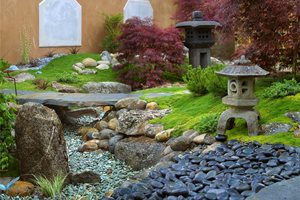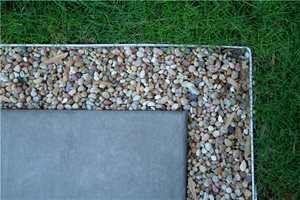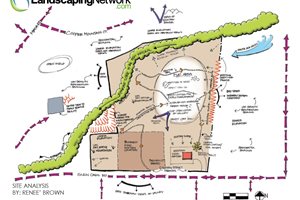Formal Gardens
Discover 7 techniques for creating a formal landscape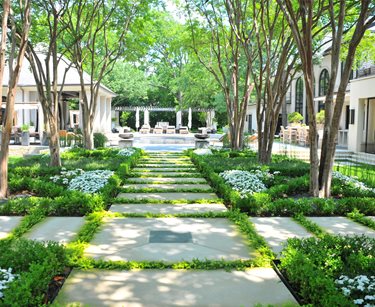
Contemporary Formality
This upscale Dallas property demonstrates that formal design can also be modern. This picture shows intersecting walkways lined with crape myrtles. This technique is known as an allée, a French word that originated in the 1700s and is used to describe a walkway lined with trees. Low boxwood hedges crisscross the space beneath the trees and contain seasonal plantings in a palette of primarily white. For a contemporary touch, the walkways are intersected by bands of moneywort, a creeping plant that grows quickly.
Read more about this property: Texas Estate Garden
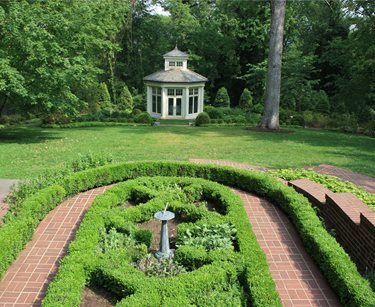
Boxwood & Herb ParterreOne of the main principles of formal landscape design is symmetry. Essentially, one side of the garden is a perfect image of the other half. For this historic home in Tennessee, an imaginary central axis extends out from the back of the home and anchors the herb garden and summer house in the distance. Boxwood parterres create a strong sense of structure and contain the many varieties of herbs being grown. Symmetry is again employed within the pattern of the parterre. The gardens at the Palace of Versailles are the ultimate example of the parterre gardening technique.
Learn more about this garden: Formal Rear Garden
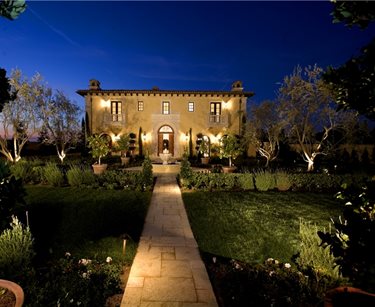
Mediterranean Formality When you think formal gardens, Italy may spring to mind. This Tuscan-inspired villa in Southern California puts a Mediterranean spin on formal garden design. A straight pathway draws the eye towards the grand house, only to be stopped briefly by a stone fountain. In ground plantings as well as potted citrus trees are arranged in a fashion that also funnels the eye to the home’s front door. Straight edges and long sightlines are a trademark of formal design.
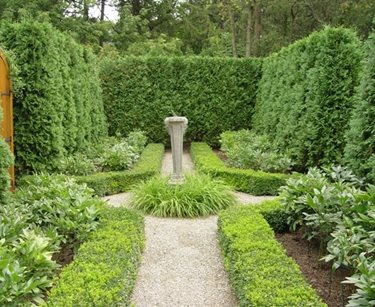
French LandscapingIf you’ve ever visited France, you know they have some of the most splendid gardens in the world. This example, inspired by French landscapes, employs geometry and symmetry. Tall hedges acting as walls surround the garden and add privacy, while at the center of the space is a sundial that sits atop a carved stone column. The walkways are paved with pea gravel which crunches slightly underfoot.
Learn more about French Landscape Design
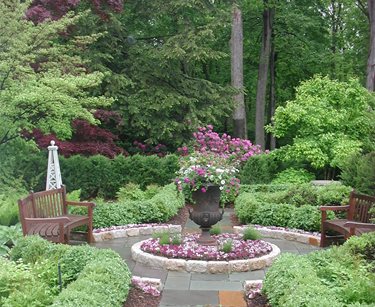
Ornate UrnAn easy way to add a little formality to your landscape is to prominently display an ornate urn. Urns come in a variety of sizes and materials; this one is made to look like lead. Here the urn was emphasized by placing it in a circular bed edged with stone. What you plant in an urn is a matter of preference. This one features a loose and colorful arrangement, while many people opt for something more compact and tidy.
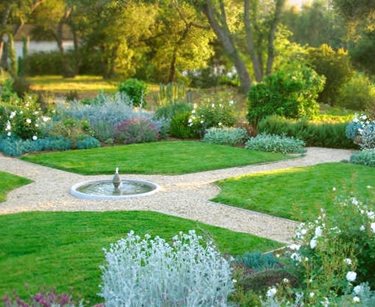
Breaking the RulesThis design breaks the rules by using a formal structure with informal plantings along the borders. Straight gravel paths intersect on a central fountain, giving it the feel of a formal garden, but the plant choices and planting scheme are almost meadow-like. Beware that it takes a skillful eye to pull off a hybrid design such as this, or else you could end up with a hodge podge of styles.
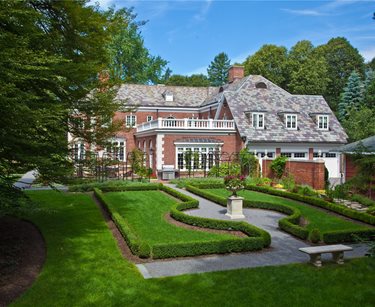
Architectural CluesOften the style of your home will dictate the style of your garden, as was the case on this property. The formal appearance of the grand home would have looked odd with a casual landscape with winding paths and an asymmetrical design. Instead a garden was created in keeping with the home’s formality. If your home has a historical style such as this one, you may want to research period gardens and create something similar so that your new garden will be as authentic as possible.

 Backyards
Backyards
 Front Yards
Front Yards
